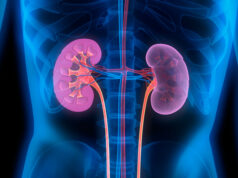This illustration, created at the Centers for Disease Control and Prevention (CDC), reveals ultrastructural morphology exhibited by coronaviruses
Zinc lozenges, humidity, experimental treatments and UV robots — do these have any effect on tackling the coronavirus as has been reported? I had a chance to probe these approaches when I sat down with Dr. Milana Trounce, one of the country’s leading pandemic and biosecurity experts. A rare combination of emergency room physician and pandemic preparedness and response expert, she is now on the frontlines, battling Covid-19 at the Stanford Medical Center.
The U.S. is past containment of the pandemic, said Dr. Trounce, with mitigation efforts remaining our best line of defense. Direct interruption of virus transmission through self-isolation directives and enhancement of healthcare system preparedness and response efforts have proven to be successful in lowering mortality rates in countries like South Korea. Orders to shelter in place in Wuhan, China, for example, were highly effective, and states like California have followed suit, locking down cities and schools, and encouraging citizens to self-isolate at home.
Dr. Trounce strongly urged state and local governments in the U.S. to consider similar shelter-in-place orders, noting that “while extreme, these measures will prevent deaths and help contain the epidemic.” Up until now, ineffective containment measures in the U.S. may have placed the country on the same path as Italy, with hospitals operating close to capacity. With widespread self-isolation, however, even for a limited amount of time, the U.S. can contain the epidemic, just as China did, where no new cases have been reported as of yesterday.
For many in the northern states, the prospect of spending the upcoming weeks isolated, with cold and dreary weather outside, is dreadful. Asked whether those living in warmer climates fared better, Dr. Trounce pointed to studies suggesting that viability of a coronavirus such as SARS was affected by high temperatures and humidity, which explained the limited SARS outbreaks in some tropical countries in Asia. This effect was measured in one instance in Asia, where an air conditioner in one SARS wing of a hospital broke, leading to a much lower transmission rate than in the wing of the same hospital where the air conditioner was fully functional.
Another study has referenced the effects of higher temperatures and humidity on lowering the transmission rate of SARS, a coronavirus, that may behave similarly to Covid-19. Dr. Trounce advised considering cranking up temperatures and humidifiers in nursing homes and houses, even for limited periods of time, as there was an indication that this may be helpful based on studies during the SARS epidemic on lowering the viability of coronaviruses.
In addition to heat and humidity, how else can we prepare, especially if we are in close living quarters with someone with Covid-19? Dr. Trounce explained that UV lights have been shown to be effective in killing viruses and were used in China for this purpose. Given the dangers of direct UV light exposure, caution must be used to disinfect only when people are not around. Hospitals currently use UV robots to disinfect but as hospitals become overcrowded, disinfecting with UV robots will become a challenge. The use of portable UV lights to irradiate an empty room such as the kitchen for a few hours is advisable, however.
But what treatments are being used globally, if one does happen to get Covid-19? And how effective are they?
There was no evidence that zinc was proven to be effective against Covid-19, Dr. Trounce said, but a number of experimental treatments undergoing clinical trials showed some promise. Gilead’s Remdesivir, for example, initially used to fight Ebola, has anti-viral activity, and under the compassionate clause has been used in clinical trials for Covid-19. A number of other clinical trials in the U.S. are also ongoing but none have yet generated concrete data.
When asked whether we should be worried about a resurgence in September, Dr. Trounce believes that despite potential dampening of cases in the summer — as we saw with SARS and MERS — we could expect a second wave of Covid-19 in the Fall. She cautioned against lifting control measures prematurely and pointed to evidence showing that in the case of the Spanish flu of 1918, cities that had lifted mitigation control measures early were hit with much more significant second waves.
Two decades ago, I had asked why Dr. Trounce decided to specialize in a field of medicine that requires responding to pandemics, infectious diseases and bioterrorism. Today in the midst of this global calamity that has upended normal life as we know it, I am glad that she did and is bringing her experience to help guide policy and medical response.
Photo credit: Centers for Disease Control and Prevention (CDC)







